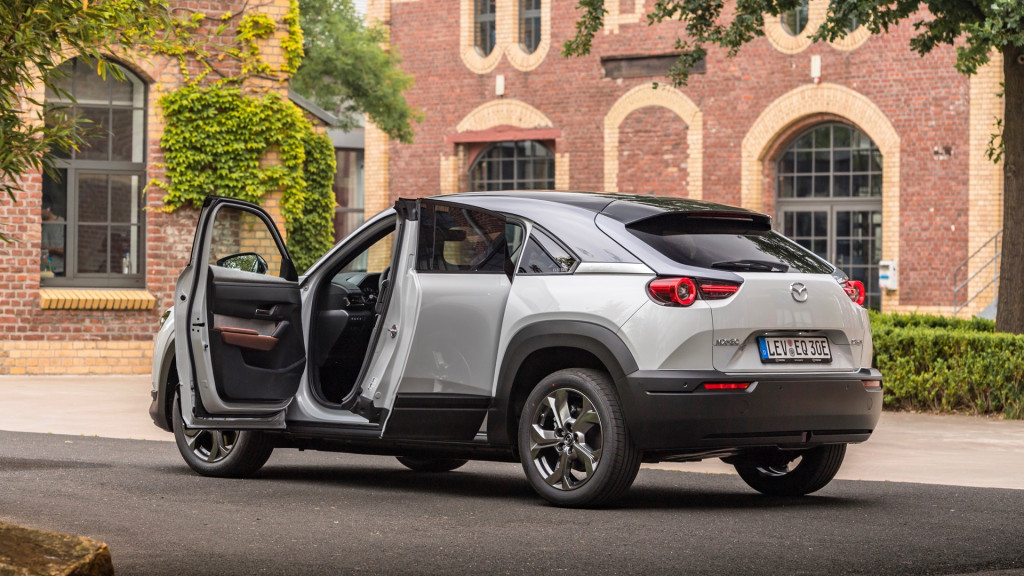In a major change of tack, Mazda on Thursday announced a large-scale electrification strategy, including plans for a dedicated EV platform by 2025, and other electrified models before then.
Mazda has attempted to keep pace with stricter global emissions standards by increasing the efficiency of its internal-combustion engines, but now it seems the automaker is fully embracing electrification, in a somewhat harried way.
The EV platform will be called Skyactiv EV scalable architecture, and will accommodate a variety of vehicle sizes and body styles, a Mazda press release said, adding that multiple models are planned between 2025 and 2030.
In the meantime, Mazda plans to launch five hybrids, five plug-in hybrids, and three all-electric cars between 2022 and 2025. Mazda said it plans to focus on key markets, including the United States, China, Europe, and Japan, but didn't specify whether every new model would be available in each market. The MX-30 electric crossover is coming to the U.S. later this year, and we can expect some collaboration with Toyota as part of an ongoing partnership between the two automakers.

2022 Mazda MX-30
With these launches, Mazda expects its entire lineup to have some degree of electrification by 2030, with EVs representing 25% of that total.
Considering Mazda's apparent lack of interest in EVs to date, this approach seems rather scattershot. But developing hybrid and all-electric powertrains is expensive, and as a smaller independent automaker, it's especially difficult for Mazda to find the necessary resources.
Mazda tested electric versus hybrid powertrains years ago, and concluded that drivers preferred the characteristics of electric vehicles. That might have dissuaded Mazda from offering more hybrids but it didn't appear to speed up development of EVs.
Instead, Mazda's SkyActiv-X homogeneous charge compression ignition (HCCI) engine and SkyActiv-D diesel were the emphasis for some time for cutting emissions and improving efficiency, but it appears than neither of these engines is coming (or in the case of the diesel, staying) in the U.S.












